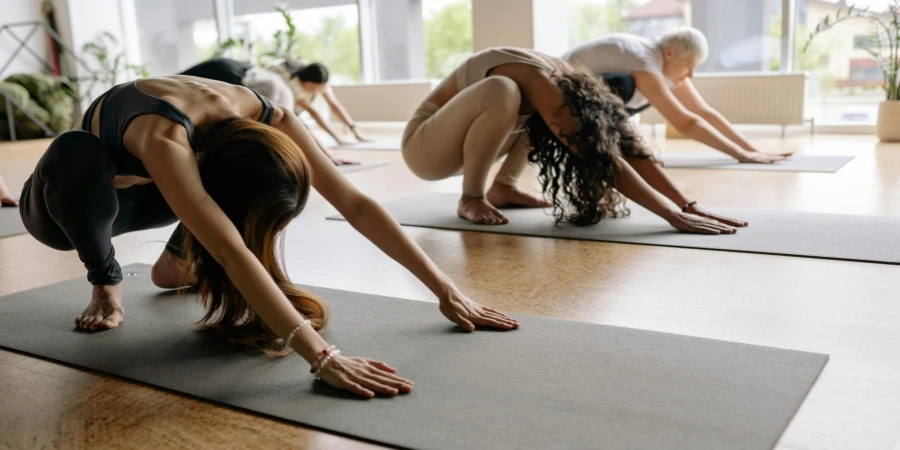Table of Contents
● Introduction
● Rising demand: A glimpse into the yoga mat market
● Eco-friendly revolution: Cutting-edge technology and design innovations
● Yoga gear giants: Top-selling models shaping consumer preferences
● Conclusion
Introduction
A good yoga mat is important for improving users’ yoga routines as it gives them the support and comfort they need while ensuring stability during poses. This helps to prevent injuries and protect your joints with adequate cushioning. A lasting yoga mat is a great investment as it saves money in the long run by reducing the need for frequent replacements. Investing in a quality yoga mat ensures a healthier and sustainable lifestyle that enhances focus and effectiveness during yoga practice.
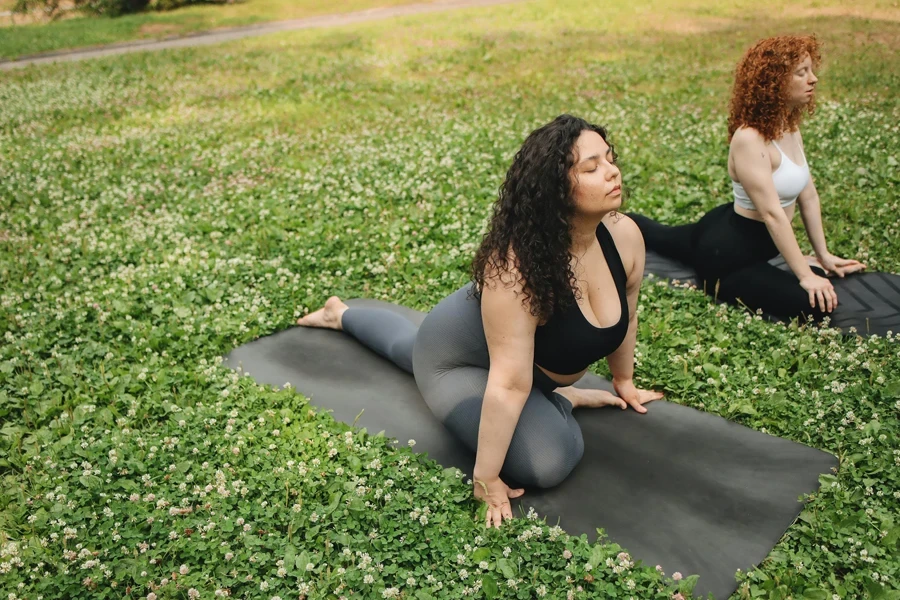
Rising demand: A glimpse into the yoga mat market
As of 2022, the market value of yoga mats stood at $17.5 billion, with a projected rise to $26.2 billion by the close of 2030, marking a growth rate of 4.9%. This growth is driven by the trend of yoga being favored as a practice for enhancing health and mental well-being. Fairfield Market Research suggests that people are encouraged to invest in higher-quality yoga mats to improve their comfort and overall yoga experience.
The growing interest in eco-friendly items has a big effect on the yoga mat sector, with customers now prefering mats crafted from sustainable resources such as natural rubber or thermoplastic elastomer (TPE). These materials are gaining traction due to their nature and superior grip features. This move towards sustainability is reflected in predictions indicating that eco-conscious yoga mats will contribute to the estimated market worth of $26 billion by 2030. The growth of online shopping is playing a big role in boosting the market since digital sales platforms are growing fast and are projected to account for 40% of the global market share by 2030. This trend is primarily driven by the ease and convenience of buying yoga mats, which provide customers with a wide range of options in terms of designs and brands, as Research and Markets and IMARC Group reported.
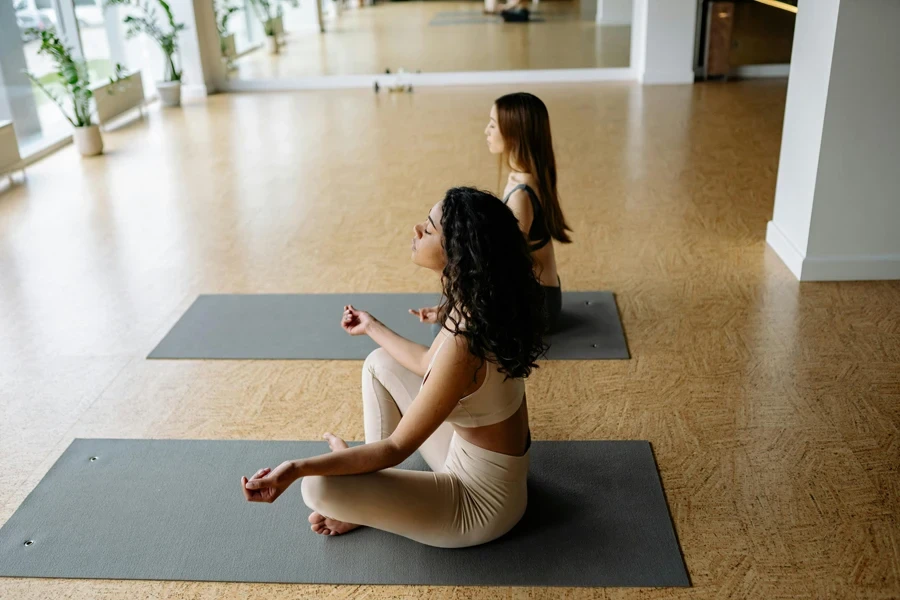
Eco-friendly revolution: Cutting-edge technology and design innovations
The industry has seen some changes recently as more people are drifting away from PVC mats to embrace eco-friendly options like thermoplastic elastomer (TPE) cork and natural rubber mats. According to Fairfield Market Research, these mats are gaining popularity for being sustainable and long-lasting, with great grip qualities. Natural rubber and cork mats have become increasingly popular among yoga enthusiasts due to their eco-friendly characteristics, offering a safer and more environmentally conscious choice for practicing yoga.
The yoga mat industry has seen changes due to technological advancements. Now, smart mats include biometric tracking and sensors for monitoring posture and alignment in real-time, providing instant feedback to enhance the yoga session experience for fitness enthusiasts and newcomers looking for a more structured approach to their practice routines. They’re also gaining popularity for their antimicrobial coatings that help maintain hygiene by inhibiting the growth of harmful bacteria and fungi, according to WeGym Fitness reports.
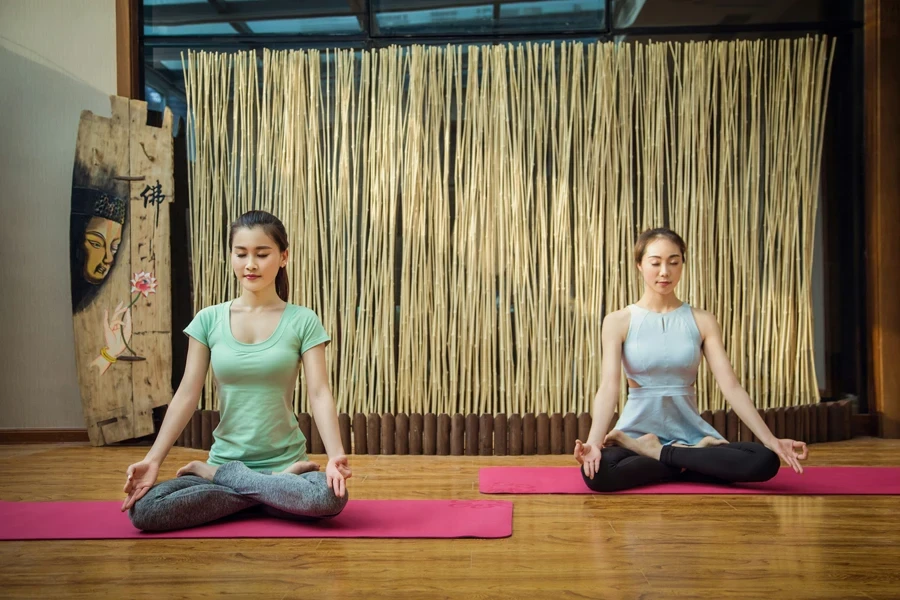
Personalization is a growing factor shaping the market landscape as consumers seek customized yoga mats that resonate with their style and tastes. Manufacturers have responded by providing a variety of choices, such as selecting colors and textures or having designs printed to cater to these preferences. This focus on customization enhances user satisfaction and enables brands to stand out in a crowded market by offering unique products.
Enhancements in material technology have significantly contributed to enhancing the traction and comfort of yoga mats. Upgraded textures on surfaces like cork or rubber mats offer slip features that aid practitioners in staying steady during their yoga routines, particularly in challenging environments like heated yoga classes or intense workout sessions. According to The New York Times Wirecutter’s review, e-rated models such as JadeYoga Harmony and Lululemons The Mat stand out for their exceptional grip and durability. This has led to a surge in popularity among customers looking for quality yoga gear.
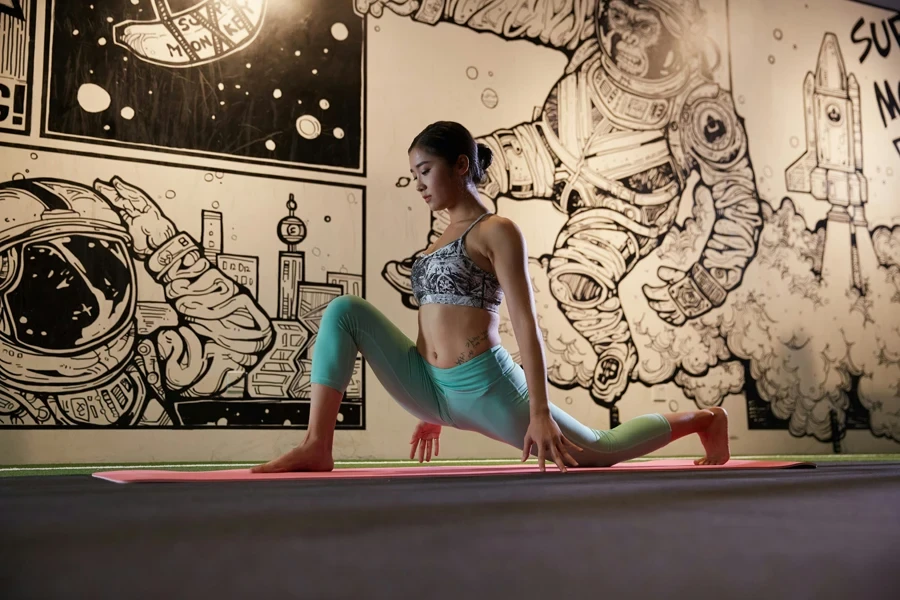
Yoga gear giants: Top-selling models shaping consumer preferences
The yoga mat industry is significantly influenced by a few popular models that impact consumer choices based on their durability and premium features. These features offer a superior grip experience to cater to various yoga practitioners’ needs and preferences, such as those who practice hot yoga in sweaty conditions. Wirecutter recommends the Jade Yoga Harmony mat for its exceptional grip performance. The eco-friendly nature of its rubber composition also attracts conscious customers seeking biodegradable alternatives.
The Mat 5mm from Lululemon features a unique design with two different surfaces: a smooth polyurethane side and a textured natural rubber side. This allows users to select the best design based on their preferred practice style. The extra cushioning offers support for poses that put pressure on the joints. These mats have gained popularity due to increasing consumer demand for durable mats. Hot yoga is also a choice for gentler restorative practice, according to The New York Times Wirecutter.
Manduka PROlite is well known for its longevity, as it can withstand regular use for years with minimal signs of wear and tear. The mat’s closed cell surface effectively repels moisture and bacteria from penetrating the material, making it convenient to maintain and suitable for usage. Its reputation for good performance has made it a top choice among users; its durability and eco-friendly features are particularly appealing to environmentally conscious consumers.
Consumer preferences increasingly lean toward mats combining high performance with environmental responsibility. As eco-consciousness grows, models like JadeYoga Harmony and Manduka PROlite, which offer long-lasting performance and sustainable materials, are becoming top choices. The emphasis on durability, premium features like superior grip, and eco-friendliness drives purchasing decisions, making these models industry leaders.
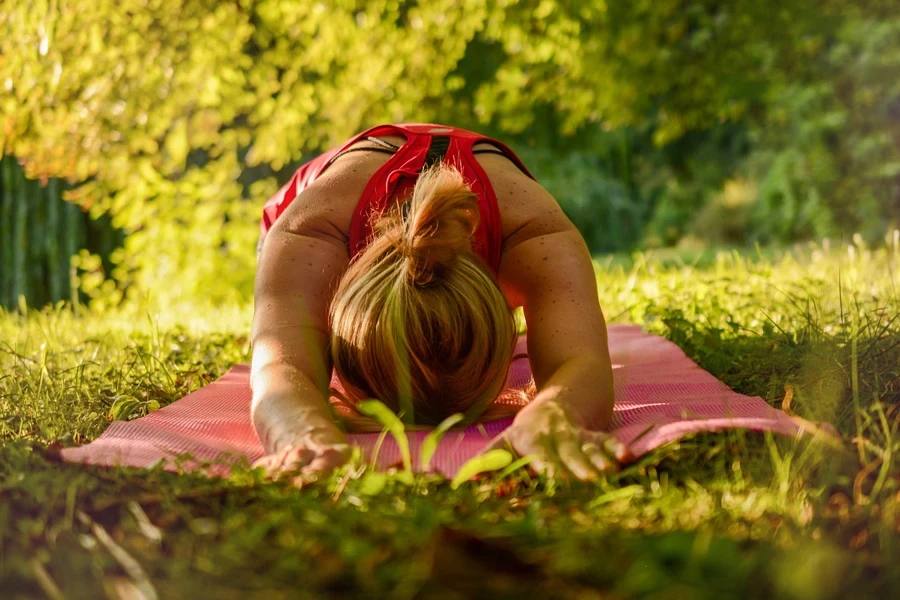
Conclusion
In the years, we can expect a notable rise in the yoga mat industry due to advancements in eco-friendly materials and technology enhancements. With consumers emphasizing sustainability efforts, companies create mats from recyclable and biodegradable materials. They are also adding antimicrobial coatings and smart tracking capabilities to cater to this trend. This shift towards health consciousness, well-being, and environmental responsibility, along with a growing preference for quality long-lasting products, will play a key role in shaping the growth of the market moving forward.
